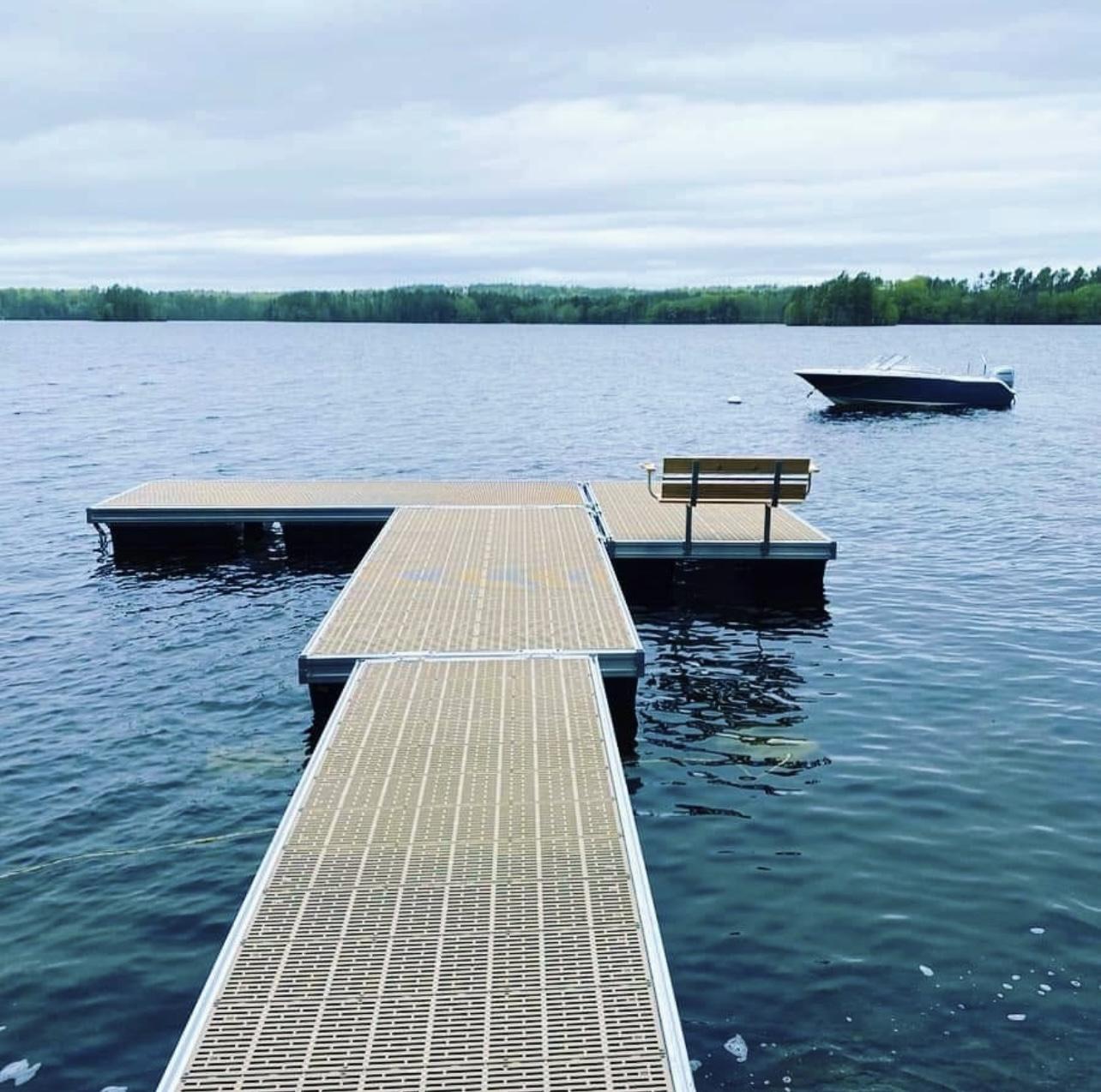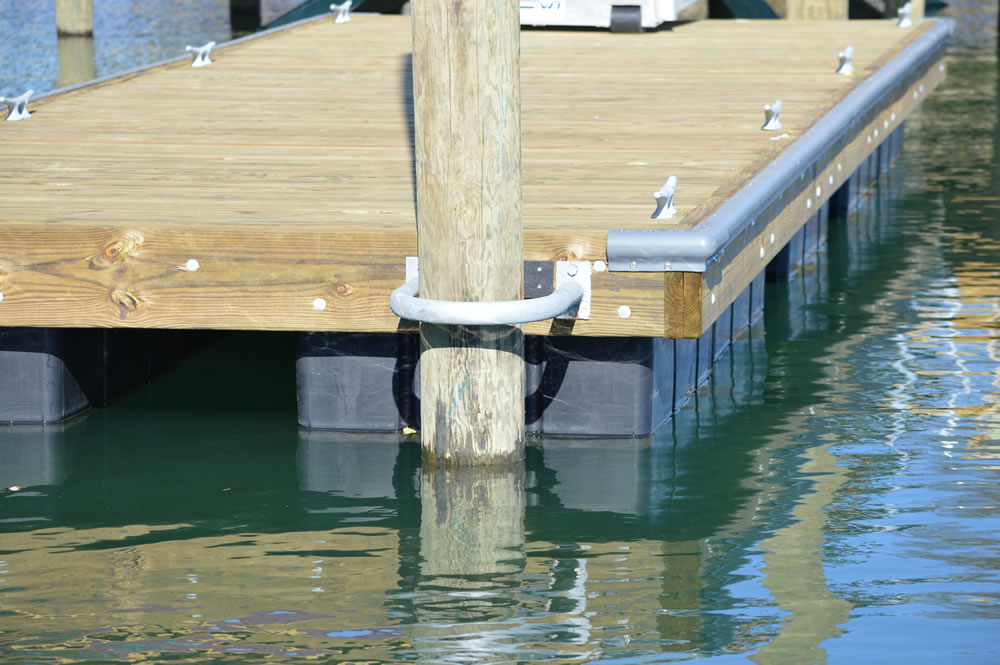Optimizing Your Outdoor Area with Specialized Floating Dock Solutions
Optimizing Your Outdoor Area with Specialized Floating Dock Solutions
Blog Article
Develop the Perfect Docking Remedy With Floating Docks
Floating docks existing a functional remedy for a range of maritime needs, adapting flawlessly to varying water degrees and varied vessel types. As we discover the crucial aspects that contribute to the performance of floating docks, a number of essential variables relating to stability and upkeep will arise, raising inquiries regarding just how to optimize your docking experience.

Benefits of Floating Docks
Floating docks offer various benefits that make them a perfect selection for various maritime applications. Unlike repaired docks, floating docks rise and fall with the trend, guaranteeing constant availability for vessels.
In addition, floating docks are typically easier and quicker to install compared to standard fixed frameworks. Their modular layout enables straightforward setting up and disassembly, facilitating upkeep and moving when essential. This flexibility is particularly useful for momentary applications or in atmospheres where conditions may alter.
Floating docks also tend to be much more eco-friendly, as they reduce interruption to the seabed and bordering marine ecological communities. Their resilient nature decreases the risk of damages to aquatic life, promoting a healthier environment. These docks can be tailored to accommodate various vessel dimensions, ensuring that they fulfill particular functional needs.
Inevitably, the mix of adaptability, simplicity of setup, and environmental factors to consider makes floating docks an extremely reliable option for a variety of maritime needs.
Selecting the Right Products
Selecting the appropriate materials for floating docks is crucial to make sure longevity, stability, and longevity. The selection of materials directly influences the dock's performance in numerous ecological conditions, including exposure to water, sunshine, and prospective wear from aquatic website traffic.
Usual materials used for floating docks consist of light weight aluminum, wood, and high-density polyethylene (HDPE) Light weight aluminum is light-weight, corrosion-resistant, and calls for marginal upkeep, making it an excellent option for longevity. Its preliminary price can be greater contrasted to other products.
Wood, while visually enticing and providing a typical look, can be vulnerable to rot and insect damages if not effectively dealt with. For that reason, using pressure-treated wood or naturally long lasting types like cedar or redwood can minimize these issues.
HDPE is a preferred selection due to its resistance to UV rays and chemicals, together with being eco friendly. floating docks. It is light-weight and offered in numerous shades, allowing for customization
Inevitably, the appropriate product option will depend on details demands, including spending plan, desired appearances, and environmental factors to consider. Mindful assessment of these aspects will certainly bring about a effective and resistant floating dock service.
Layout Factors To Consider for Security
When making floating docks, making sure stability is a basic element that can significantly influence their functionality and safety. Security in floating dock layout is affected by numerous factors, including buoyancy, weight circulation, and the plan of elements.
Weight distribution is important; equally dispersing loads throughout the dock prevents tilting and improves stability. This can be attained with tactical placement of docking tools, such as fenders and cleats, along with proper spacing of drifts. Additionally, the dimensions of the dock must be attentively planned. Bigger styles can use increased security, especially in harsh water problems, while longer docks might need additional supports to protect against drooping.
Another crucial consideration is the ecological effect, consisting of wave activity and wind. Incorporating features such as sidewalls or skirting can assist minimize the impacts of environmental forces, maintaining security in negative conditions. Ultimately, a combination of thoughtful layout, product option, and understanding of ecological elements will certainly generate a floating dock that meets both stability and safety and security requirements.
Installation Tips and Strategies

Next, protect the essential licenses and stick to local guidelines, which might dictate setup techniques and ecological factors to consider. Involve important link a qualified specialist experienced in floating dock installations if called for. Use premium materials made for aquatic atmospheres to enhance resilience and long life.
When placing the dock, align it alongside the coastline to help with here easy accessibility. Make certain that the anchoring system is durable, employing cinder block or helical supports to stabilize the dock versus wind and wave activity. It's important to account for seasonal water level fluctuations, consisting of possible ice motion in colder climates.
During the installation, confirm the dock's floatation and security prior to settling the anchoring. Consistently examine the installment for any type of indicators of wear or damage. By adhering to these pointers and techniques, you can achieve a protected, functional, and cosmetically pleasing floating dock installation that satisfies your demands.
Upkeep and Treatment Guidelines
Preserving and caring for floating docks is crucial to extending their life-span and ensuring risk-free usage. Regular evaluations need to be conducted to identify any type of signs of wear, damage, or marine growth. Search for fractures, loosened installations, or tarnished locations on the dock's surface, as these problems can jeopardize architectural stability.
Cleansing is essential. Utilize a pressure washer to eliminate algae, barnacles, and debris, which can collect with time. For persistent development, take into consideration eco-friendly cleaning agents that won't damage marine life.
Additionally, check the mooring lines and anchors frequently to guarantee they are free and safe and secure from deterioration. Change any kind of frayed or harmed lines promptly to keep stability.
During extreme weather, such as storms a fantastic read or freezing problems, take preventive procedures. Protect the dock with additional mooring lines and, if feasible, get rid of any removable components to prevent damage.
Final Thought
In final thought, the implementation of floating docks presents a reliable and versatile docking remedy suitable for numerous maritime applications. Their adaptability to fluctuating water levels, integrated with a modular style, permits very easy modification and relocation. Selecting appropriate products improves both toughness and visual allure, while mindful consideration of security guarantees safety and durability. With proper installment and regular upkeep, floating docks can offer dependable and reliable docking experiences for a variety of vessels.
As we discover the essential components that contribute to the efficiency of floating docks, several vital elements relating to security and upkeep will arise, raising questions regarding just how to optimize your docking experience. Unlike dealt with docks, floating docks increase and loss with the tide, ensuring regular access for vessels.When developing floating docks, making sure security is a basic element that can substantially influence their capability and safety and security. Stability in floating dock style is influenced by different aspects, consisting of buoyancy, weight distribution, and the arrangement of components. Ultimately, a combination of thoughtful style, material choice, and understanding of environmental elements will produce a floating dock that satisfies both stability and safety requirements.
Report this page